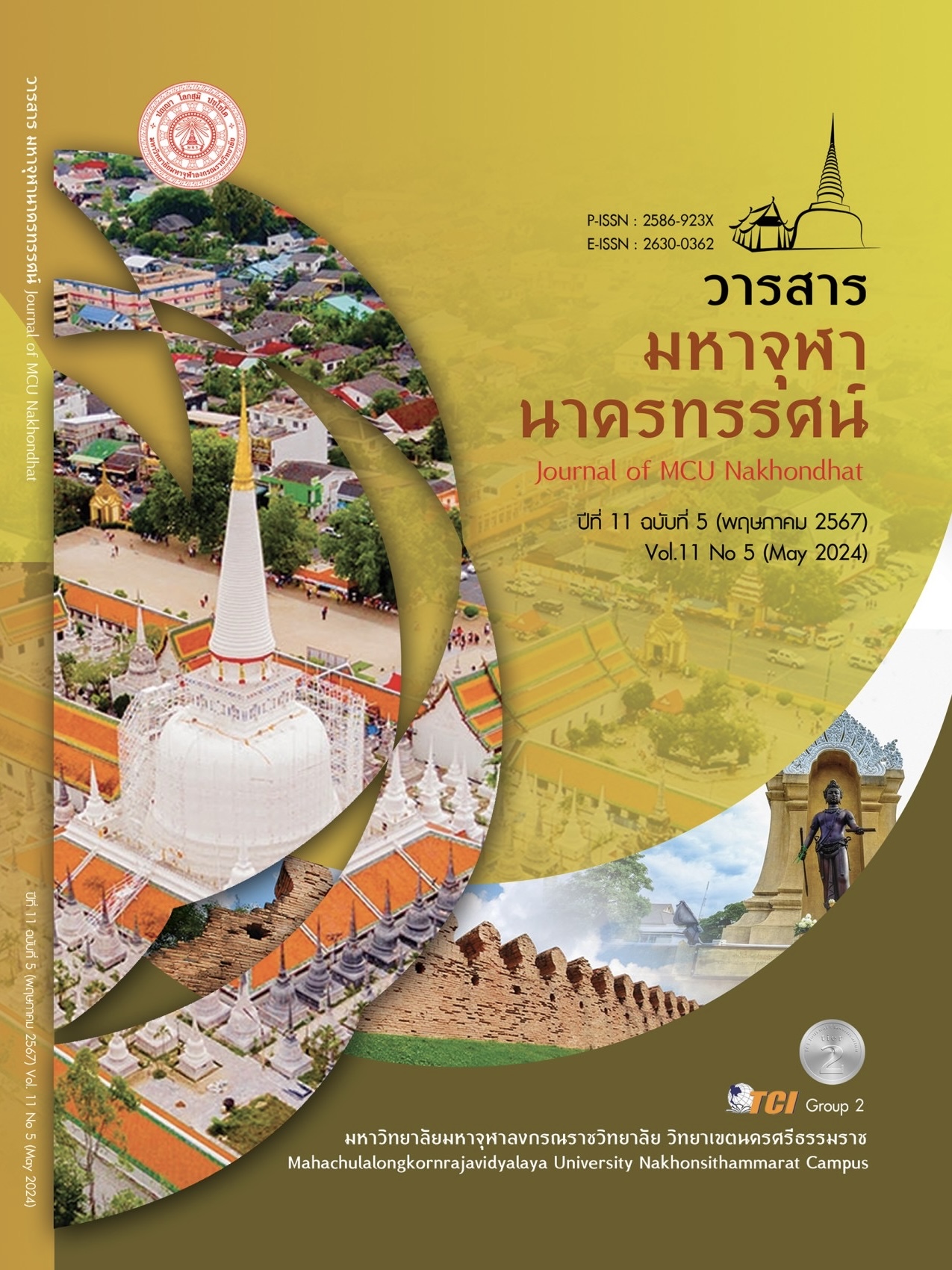CONSUMPTION BEHAVIOR OF AROMATIC COCONUT PRODUCTS IN THAILAND
Main Article Content
Abstract
The objective of the research is to study the consumption behavior of aromatic coconut products in Thailand. It involves examining the impact of marketing mix elements on the consumption of these products and exploring the correlations between personal traits and consumption habits through a questionnaire survey. This study is quantitative research. The study collected and analyzed 400 samples, employing statistical methods including frequency analysis, percentage calculation, mean determination, and standard deviation estimation, and examining the relationship between personal traits and consumption the consumption behavior of aromatic coconut products in Thailand hypothesis testing via the Chi-Square Test. The results found that most consumers of aromatic coconut products in Thailand prefer to buy fresh coconuts, the frequency of purchase is 1-2 times per month, the cost is not more than 100 baht per time, and mostly buy from roadside shops. Overall, the study indicates a significant impact of marketing mix factors on the overall consumption of aromatic coconut products at a high level with an average of 4.13. Specifically, distribution channels emerged as the most influential aspect, followed by price, product attributes, and marketing promotions, in descending order of importance to consumers. Regarding the association between personal characteristics and consumption behavior of aromatic coconut products in Thailand, gender, age, marital status, and regular monthly income were found to be correlated with consumption patterns. While education level, occupation, number of family members residing together, and residential areas showed no relationship with consumption behaviour concerning aromatic coconut products.
Article Details

This work is licensed under a Creative Commons Attribution-NonCommercial-NoDerivatives 4.0 International License.
References
ดลนัสม์ โพธิ์ฉาย. (2562). ปัจจัยทางการตลาดที่ส่งผลต่อการตัดสินใจบริโภคผลไม้พรีเมียม กรณีศึกษาผู้บริโภค ในอำเภอบ้านโป่ง จังหวัดราชบุรี. ใน วิทยานิพนธ์บริหารธุรกิจมหาบัณฑิต สาขาวิชาหลักสูตรบริหารธุรกิจมหาบัณฑิต. มหาวิทยาลัยศิลปากร.
ปวรุตม์ ครุฑเมือง และคณะ. (2566). ส่วนประสมทางการตลาดและความ พึงพอใจของลูกค้าที่ส่งผลต่อการตัดสินใจซื้อมะพร้าวน้ำหอม จังหวัดอุตรดิตถ์. วารสารวิจัยราชภัฏกรุงเก่า สาขามนุษยศาสตร์และสังคมศาสตร์, 10(1), 73-84.
เปรมปวีณ์ ปิ่นแก้ว. (2560). ปัจจัยที่มีผลต่อการตัดสินใจซื้อผลิตภัณฑ์อาหารแปรรูปจากมะพร้าวน้ำหอมของผู้บริโภคในเขตกรุงเทพมหานคร. ใน วิทยานิพนธ์บริหารธุรกิจมหาบัณฑิต สาขาวิชาบริหารธุรกิจ. มหาวิทยาลัยนานาชาติแสตมฟอร์ด.
วนิดา วัฒนชีวโนปกรณ์ และสิทธิพร รุจิระยรรยง. (2561). ปัจจัยกำหนดความสามารถในการแข่งขันของอุตสาหกรรมมะพร้าวน้ำหอมและน้ำมะพร้าวของไทย. วารสารวิชาการ มหาวิทยาลัยหอการค้าไทย มนุษยศาสตร์และสังคมศาสตร์, 38(2), 82-103.
สำนักงานนโยบายและยุทธศาสตร์การค้า. (2566). โอกาสมะพร้าวน้ำหอมไทยก้าวไกลในตลาดโลก. วารสาร สนค., 13(139), 1-12.
สำนักงานเศรษฐกิจการเกษตร. (2562). นื้อที่ใช้ประโยชน์ทางการเกษตร รายจังหวัด ปี พ.ศ. 2562. เรียกใช้เมื่อ 5 ตุลาคม 2566 จาก https://www.oae.go.th/view/1/การใช้ที่ดิน/TH-TH
สำนักงานสภาพัฒนาการเศรษฐกิจและสังคมแห่งชาติ. (2562). แผนแม่บทภายใต้ยุทธศาสตร์ชาติ (2561-2580) (ฉบับแก้ไขเพิ่มเติม). เรียกใช้เมื่อ 5 ตุลาคม 2566 จาก http://nscr.nesdc.go.th/master-plans/
อิราวัฒน์ ชมระกา และคณะ. (2565). พฤติกรรมผู้บริโภคและปัจจัยส่วนประสมทางการตลาดที่ส่งผลต่อการตัดสินใจซื้อ ลองกองจังหวัดอุตรดิตถ์. วารสารบริหารธุรกิจ มหาวิทยาลัยแม่โจ้, 4(1), 57-76.
Yamane, T. (1967). Elementary Sampling Theory. New Jersey: Prentice Hall, Inc., Engle clips.


